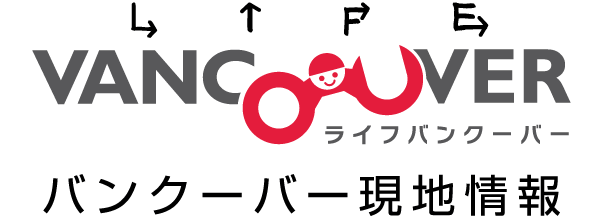昨日3月18日(水)にジャスティントルドー首相から新型コロナウイルス対策として最大820億ドル(約6兆1000億円)を拠出することが発表されましたが、本日19日(木)に再度会見が開かれました。
今回の会見では、カナダ政府が新型コロナウイルスで苦しんでいる全てのカナダ人を支援するさらなる保証をすることを改めて語り、政府が新型コロナウイルスの影響からくる様々なシナリオに対して準備を行っていることを明言。
また、旅行規制やソーシャル・ディスタンシング(社会的距離を保つこと・他人との接触を避けること)など医療専門家のアドバイスから現在実施されている安全対策措置は今後もしばらく(数週間から数か月程度)続く可能性があると述べました。
さらに、同日にCBCが行った Bill Morneau 財務相に対するインタビューでは、財務相から「今後2〜3週間以内には政府が新型コロナウイルス緊急支援資金の援助を開始できるようにしたい」という言葉を聞くことができました。(援助金は小切手郵送ではなく、ダイレクトデポジットでの送金になるとのことです)
昨日・本日の会見などを通して、今後どのようなサポートが受けられるのか心配している方も多いはず。そこで今回は、政府がウェブサイトで公表している「カナダ国民に対しての支援策」の一部について日本語に訳してみました。
カナダ政府の国民への支援内容の一部を日本語に訳して解説
In response to #COVID19, we are supporting individuals and businesses in need. Have a look at how we will support you: https://t.co/w7tzCJwYhP #EconomicResponse pic.twitter.com/2npgeJPEa8
— FinanceCanada (@FinanceCanada) March 18, 2020
ここからはカナダ政府のウェブサイトにある「Canada’s COVID-19 Economic Response Plan」の「Support to Canadians」の内容の一部を日本語に訳してお届けします。
Support to Canadians
・Temporary Income Support for Workers and Parents
・Longer-Term Income Support for Workers
・Income Support for Individuals Who Need It Most
以下、カナダ政府または公式発表の参照サイトを掲載しておりますので、最終的にはサイトを確認の上、ご自身の責任で確認ください。また、本件に関するお問合せは受けかねます。もし誤訳や解釈などが間違っている場合はご指摘頂いた後、できるだけ速やかに修正するように致します。皆さまどうぞご協力ください。
【Support to Canadians】
カナディアンへの支援に関して
Temporary Income Support for Workers and Parents
労働者と子どもを持つ親への臨時所得救済(Temporary Income Support)
For Canadians without paid sick leave (or similar workplace accommodation) who are sick, quarantined or forced to stay home to care for children, the Government is:
Waiving the one-week waiting period for those individuals in imposed quarantine that claim Employment Insurance (EI) sickness benefits. This temporary measure will be in effect as of March 15, 2020.
Waiving the requirement to provide a medical certificate to access EI sickness benefits.
Introducing the Emergency Care Benefit providing up to $900 bi-weekly, for up to 15 weeks. This flat-payment Benefit would be administered through the Canada Revenue Agency (CRA) and provide income support to:・Workers, including the self-employed, who are quarantined or sick with COVID-19 but do not qualify for EI sickness benefits.
・Workers, including the self-employed, who are taking care of a family member who is sick with COVID-19, such as an elderly parent, but do not qualify for EI sickness benefits.
・Parents with children who require care or supervision due to school or daycare closures, and are unable to earn employment income, irrespective of whether they qualify for EI or not.
Application for the Benefit will be available in April 2020, and require Canadians to attest that they meet the eligibility requirements. They will need to re-attest every two weeks to reconfirm their eligibility. Canadians will select one of three channels to apply for the Benefit:
1.by accessing it on their CRA MyAccount secure portal;
2.by accessing it from their secure My Service Canada Account; or
3.by calling a toll free number equipped with an automated application process.
病気休暇手当がない(または同様の職場環境)状況下で、病気であること、または隔離されている、あるいは子どもの世話をするために家に留まることを強いられているカナディアンである親や労働者に向けて、政府は以下のとおりの支援を提供します。
隔離を要求された個人に対して、従来の失業保険(EI)の申請において発生する1週間の結果待機期間を一時的に廃止します。この一時的な措置は2020年3月15日より有効とします。
従来の失業保険(EI)の申請において、医療機関の証明を必要とする申請条件を一時的に廃止します。
緊急対処手当て(Emergency Care Benefit)を、最大900カナダドル/2週間とし、最大15週間該当者に提供します。これらの定額給付は、カナダ歳入庁(CRA)を通じて管理され、以下を該当者とします。
■ COVID-19が原因で隔離を強いられている、或いはCOVID-19を罹患しているが、失業保険(EI)を得る資格の対象とならない自営業者または労働者。
■ COVID-19を罹患している家族の世話をしている、または高齢の親の介護をしていて、失業保険(EI)を得る資格の対象とならない、自営業者または労働者。
■ 失業保険(EI)を得る資格の有無を問わず、学校の閉鎖により、親による子どもの世話や指導を必要とし、またこれが原因で雇用収入を得ることができない親。
上記の緊急対処手当て(Emergency Care Benefit)の申請に関しては2020年4月より申請可能となります。
該当するカナダ国民は資格要件を満たしていることを証明する必要があります。2週間ごとに該当することを再度証明、そして確認する必要があります。
以下の3つのいずれかのチャンネル内にて申請ができます。
1. 「CRA MyAccount」内にて申請
2. 「My Service Canada Account」内にて申請
3. フリーダイヤルに電話して、自動申請案内に従って申請
Longer-Term Income Support for Workers
労働者への長期所得支援(Longer-Term Income Support)
For Canadians who lose their jobs or face reduced hours as a result of COVID’s impact, the Government is:
・Introducing an Emergency Support Benefit delivered through the CRA to provide up to $5.0 billion in support to workers who are not eligible for EI and who are facing unemployment.
・Implementing the EI Work Sharing Program, which provides EI benefits to workers who agree to reduce their normal working hour as a result of developments beyond the control of their employers, by extending the eligibility of such agreements to 76 weeks, easing eligibility requirements, and streamlining the application process. This was announced by the Prime Minister on March 11, 2020.
COVID-19の影響により職を失う、或いは就労時間の短縮に直面するカナディアンに対して、政府は以下の通りの支援を提供します。
■ 失業保険(EI)の資格がなく、失業に直面している労働者に向けて、最大50億カナダドルの緊急支援給付をカナダ歳入庁(CRA)を通じて提供します。
■ EIワークシェアリングプログラム(EI Work Sharing Program)を導入することで、雇用主の制御と管理の範囲を超えた予期せぬ今後の事態の発展を考慮した結果として通常の労働時間を削減することに同意した労働者には、失業保険が給付されます。
なお、EIワークシェアリングプログラムの契約を76週間に延長し、資格適応条件の緩和や、申請プロセスもよりスムーズになるように簡易化もされます。上記は、2020年3月11日にカナダ首相によって発表されました。
Income Support for Individuals Who Need It Most
支援を最も必要としている個人への所得支援
For over 12 million low- and modest-income families, who may require additional help with their finances, the Government is proposing to provide a one-time special payment by early May 2020 through the Goods and Services Tax credit (GSTC). This will double the maximum annual GSTC payment amounts for the 2019-20 benefit year. The average boost to income for those benefitting from this measure will be close to $400 for single individuals and close to $600 for couples. This measure will inject $5.5 billion into the economy.
For over 3.5 million families with children, who may also require additional support, the Government is proposing to increase the maximum annual Canada Child Benefit (CCB) payment amounts, only for the 2019-20 benefit year, by $300 per child. The overall increase for families receiving CCB will be approximately $550 on average; these families will receive an extra $300 per child as part of their May payment. In total, this measure will deliver almost $2 billion in extra support.
Together, the proposed enhancements of the GSTC and CCB will give a single parent with two children and low to modest income nearly $1,500 in additional short-term support.
To ensure that certain groups who may be vulnerable to the impacts of COVID-19 have the support they need, the Government is proposing targeted help by:
・Providing $305 million for a new distinctions-based Indigenous Community Support Fund to address immediate needs in First Nations, Inuit, and Métis Nation communities.
・Placing a six-month interest-free moratorium on the repayment of Canada Student Loans for all individuals currently in the process of repaying these loans.
・Reducing required minimum withdrawals from Registered Retirement Income Funds (RRIFs) by 25% for 2020, in recognition of volatile market conditions and their impact on many seniors’ retirement savings. This will provide flexibility to seniors that are concerned that they may be required to liquidate their RRIF assets to meet minimum withdrawal requirements. Similar rules would apply to individuals receiving variable benefit payments under a defined contribution Registered Pension Plan.
・Providing the Reaching Home initiative with $157.5 million to continue to support people experiencing homelessness during the COVID-19 outbreak. The funding could be used for a range of needs such as purchasing beds and physical barriers for social distancing and securing accommodation to reduce overcrowding in shelters.
・Supporting women and children fleeing violence, by providing up to $50 million to women’s shelters and sexual assault centres to help with their capacity to manage or prevent an outbreak in their facilities. This includes funding for facilities in Indigenous communities.
財政支援をさらに必要とするかもしれない1,200万人以上の低所得および中所得の家族のために、政府は2020年5月上旬までに消費税控除(GSTC)を通じて1回限りの特別支払いを行うことに関して提案と準備をしています。
これにより、該当する2019-2020の福利厚生該当期間において、GSTCの年間最大支払額が2倍となります。この措置の恩恵を受ける該当者は、1個人世帯で約400カナダドル、2人家族世帯で600ドル近くになります。なお、この措置により55億カナダドルがカナダ経済に投入される見通しとなります。
追加の支援を必要とする可能性のある350万以上の子どもを持つ家族のために、カナダ政府は2019-2020の福利厚生期間のみ、カナダ児童手当(CCB)の年間給付額を子ども1人につき300カナダドル増加する見込みです。これにより、CCBの給付を受けている家族は、平均で約550カナダドルの給付金増加となります。これらの家族は、5月のCCB給付の一部として、子ども1人につき300カナダドルの追加支援費用も受け取ることができ、合計約20億カナダドルを支援として提供します。
上記のGSTCとCCBによる支援を合わせると、1人親で2人の子どもを養っている世帯と低所得から中程度の世帯に対して、追加で1,500カナダドルの短期支援給付金となります。
COVID-19の影響により、より多くの悪影響を受ける可能性のある特定のグループが、必要なサポートを確実に受けられるよう、カナダ政府は以下のよりターゲットを絞った支援策を提案しています。
■ 先住民族、イヌイット、メティスコミュニティにおける、緊急的な需要への対処として、先住民コミュニティ支援基金に3億500万カナダドルを提供します。
■ カナダの学生ローンの返済をしているすべての個人に、6か月の無利子期間の猶予を与えます。
■ 不安定な金融市場の状況と多くの高齢者退職貯蓄への影響を考慮して、2020年において登録退職所得基金(RRIF)から必要とされる最低出金額を25%削減します。
これにより、最低出金要件を満たすために、RRIFへの資産を捻出する必要があるかもしれないと心配している高齢者の経済状況に柔軟性がもたらされます。同様の規則は、税制適格退職年金制度において変動給付金を受け取る個人にも適用されます。
■ リーチングホーム支援に1億5750万カナダドルを提供し、COVID-19の現状においても、ホームレスの人々を引き続き支援します。この資金に関しては、シェルターの過密状態を緩和するために、ベッドの購入や、感染拡大減少のための適度な距離を保つための物理的な障壁や宿泊施設の確保など、さまざまなニーズに使用されます。
■ 女性専用シェルターと性的暴行保護センターに最大5000万カナダドルを提供します。施設での感染或いは事前予防策への経済支援として、暴力から逃がれる女性と児童を支援します。これらの資金には、先住民コミュニティ施設への資金提供も含まれます。
ということで、まだ支援金の給付は始まっていませんが、EIと緊急支援金の受給の申請方法については以下のCBCの記事でまとめられているので、こちらもチェックしてみてください。
How to apply for employment insurance and COVID-19 emergency benefits. Emergency benefits to be made available in April for those who don't qualify for EI. https://t.co/C8iXefRUts
— CBC News Alerts (@CBCAlerts) March 19, 2020
EIの申請資格が無いという方も、政府の緊急支援策である「Emergency Care Benefit」と「Emergency Support Benefit」が受けられる可能性があります。(こちらは4月にCRAのサイトを通して申請開始となる予定です。)
支援政策についてのカナダ政府のページはこちら
Canada’s COVID-19 Economic Response Plan
EIにアプライする方はこちら
https://www.canada.ca/en/services/benefits/ei/ei-sickness/apply.html




